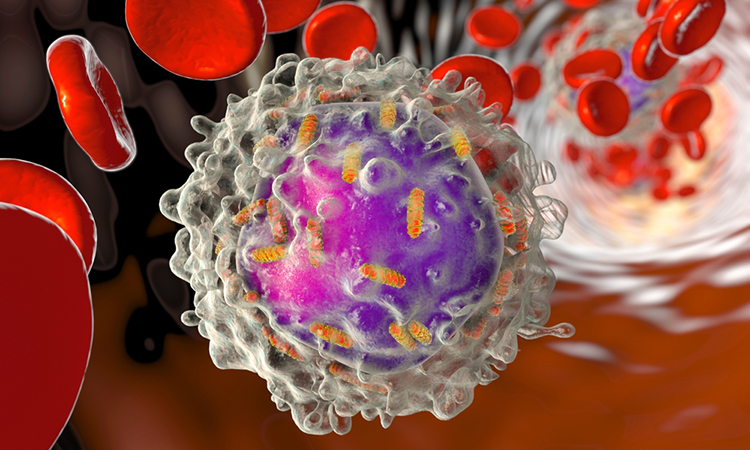Recombining drugs helps restore gene’s ability to signal for death of leukaemia cells
Posted: 24 April 2023 | Izzy Wood (Drug Target Review) | No comments yet
US researchers find combination of chloroquine and venetoclax promotes cancer cell death in mouse models with acute myeloid leukaemia (AML).


New research from New York University (NYU) Langone Health and its Perlmutter Cancer Centre, US, has shed light on why leukaemia cells become resistant to a commonly prescribed drug called venetoclax, which is used to promote cancer cell death in people with acute myeloid leukaemia (AML).
The study, published in Cancer Discovery, utilised human tissue samples and mouse models to uncover that resistance to venetoclax occurs due to an increase in the breakdown and turnover of mitochondria, which are responsible for powering the cell’s functions and signalling for cell death under adverse conditions.
AML is the most common form of adult leukaemia, originating in the bone marrow cells and resulting in the rapid build up of abnormal blood cells. It causes more than 11,500 deaths in the United States annually and is typically treated with chemotherapy and targeted drug therapies, with bone marrow transplantation used as a last resort when other options fail.
The research revealed that several genes associated with mitophagy, a process in which damaged mitochondria are “self-eaten” to prevent them from sending death signals, were increased in leukaemia patient samples compared to normal controls. Moreover, the level of these genes was even higher in samples from leukaemia patients who had developed drug resistance compared to those who did not. Notably, the gene for Mitofusin-2 (MFN2), a protein in the outer mitochondrial membrane, was found to be overly active in drug-resistant disease.
To further validate their findings, the researchers conducted experiments in mice that were transplanted with bone marrow from AML patients. They found that the drug chloroquine, a known mitophagy inhibitor, restored the ability of venetoclax to kill cancer cells. These findings suggest that combining venetoclax with either MFN2 or general mitophagy inhibitors could potentially be a future therapy for AML, as current drug treatments are often hindered by drug resistance.
“Overcoming resistance to BH3 mimetic drugs like venetoclax is of unique clinical significance because these medications are often used for treating people with AML,” said study co-lead investigator Dr Christina Glytsou, who is now an assistant professor at Rutgers University.
AML is known to be difficult to treat, with less than a third of affected individuals living longer than five years after diagnosis. Therefore, maximising the impact of existing therapies is crucial. “Our preclinical findings suggest that combining BH3 mimetics like venetoclax with either MFN2 or general mitophagy inhibitors could possibly serve as a future therapy for AML, as current drug treatments are stalled due to drug resistance,” added study senior investigator Dr Iannis Aifantis,
The study also revealed that cancer cells exposed to compounds that induce cell death demonstrated a doubling in mitophagy rates, and further testing in cancer cells lacking MFN2 showed increased sensitivity to drugs similar to venetoclax compared to cells with functional MFN2. This supports the notion that increased mitophagy is a contributing factor to drug resistance in leukaemia cells.
The findings from this research provide new insights into the mechanisms of drug resistance in AML and offer potential strategies for overcoming it in the future.
Related topics
Animal Models, Drug Repurposing, Drug Targets, Gene Therapy, Oncology, Targets, Therapeutics
Related conditions
acute myeloid leukaemia (AML)
Related organisations
New York University (NYU) Langone Health, NYU Perlmutter Cancer Centre
Related people
Dr Christina Glytsou, Dr Iannis Aifantis








